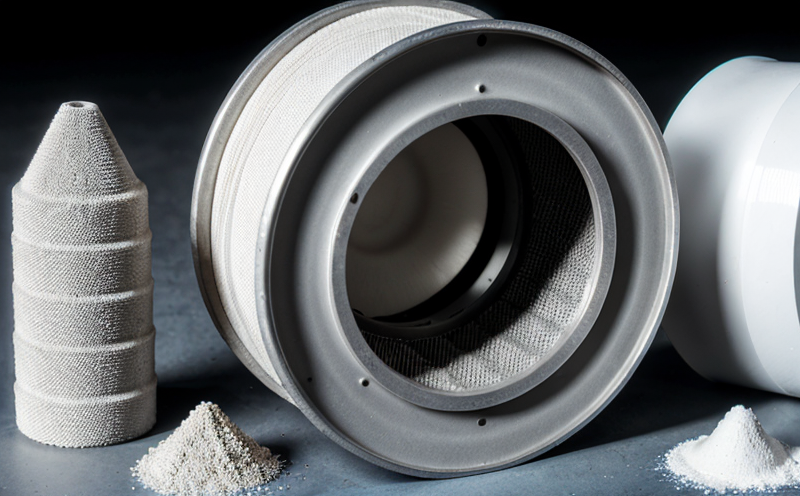ASTM D4541 Adhesion Compliance Testing of Marine Coatings
The ASTM D4541 standard outlines the procedure for evaluating the adhesion strength of marine coatings to various substrates. This test is critical in ensuring that coatings applied to ship hulls, tanks, and other marine equipment adhere properly, thereby protecting against corrosion, erosion, and environmental degradation.
The testing process involves several key steps: preparation of the substrate, application of the coating, and subsequent adhesion strength assessment using a standard pull-off method. The primary goal is to assess the cohesive strength between the coating and the underlying material, ensuring that any failure occurs within the coating itself rather than at the interface.
In marine applications, this test ensures that coatings maintain their integrity under harsh environmental conditions such as saltwater exposure, UV radiation, and mechanical stresses. This is crucial for maintaining the structural integrity of ships and other maritime equipment over extended periods in challenging environments.
The ASTM D4541 method uses a round disc or flat panel specimen, which is prepared to have a specific area and thickness. After applying the coating according to manufacturer specifications, the sample is cured under controlled conditions before undergoing adhesion testing.
The adhesion test typically involves attaching a pull-off fixture to the coated surface and then pulling it away from the substrate at a specified rate until failure occurs. The force at which this happens indicates the cohesive strength of the coating. This value must meet or exceed the minimum requirements set by ASTM D4541 for the specific material being tested.
For compliance with marine equipment standards, the testing procedure should be conducted in accordance with international recommendations such as ISO 9223 and EN ISO 8502-4. These standards provide additional guidance on specimen preparation, curing conditions, and interpretation of results to ensure consistency across different laboratories and regions.
The importance of ASTM D4541 cannot be overstated in the marine industry where reliability is paramount. Ensuring that coatings adhere properly can significantly extend the lifespan of maritime equipment, reduce maintenance costs, and enhance overall safety at sea.
- ISO 9223: International Standard on Protective Coatings for Ships' Hulls and Superstructures.
- EN ISO 8502-4: European Norm specifying the determination of dry film thickness in protective coatings used on ships.
The ASTM D4541 test is widely accepted globally, particularly within the maritime sector. Compliance with this standard is essential for manufacturers and operators seeking to ensure that their products meet stringent quality and performance criteria.
Applied Standards
This service strictly adheres to the ASTM D4541 standard, ensuring accurate and reliable results. The test is conducted in accordance with international recommendations such as ISO 9223 and EN ISO 8502-4.
The ASTM D4541 method provides a standardized approach to evaluating adhesion strength, which is critical for the marine industry. It ensures that coatings applied to marine equipment meet the necessary performance criteria, thereby enhancing the durability and safety of such equipment.
ISO 9223 offers additional guidance on protective coatings for ships' hulls and superstructures, while EN ISO 8502-4 specifies methods for determining dry film thickness in protective coatings used on ships. These standards complement the ASTM D4541 test by providing broader context and supplementary guidelines.
Compliance with these international standards is crucial for manufacturers and operators in the marine sector. It ensures that products meet stringent quality and performance criteria, thereby enhancing reliability and safety in a harsh environment.
Scope and Methodology
The ASTM D4541 standard defines the procedure for evaluating adhesion strength between a marine coating and its substrate. This test is crucial for ensuring that coatings applied to ship hulls, tanks, and other marine equipment adhere properly, thereby protecting against corrosion, erosion, and environmental degradation.
Typically, the testing process involves several key steps: preparation of the substrate, application of the coating, and subsequent adhesion strength assessment using a standard pull-off method. The primary goal is to assess the cohesive strength between the coating and the underlying material, ensuring that any failure occurs within the coating itself rather than at the interface.
The test begins with preparing the substrate according to ASTM D4541 specifications. This involves cleaning the surface thoroughly to remove any contaminants or imperfections that could affect adhesion. The substrate is then dried and allowed to reach a stable state before applying the coating.
After application, the sample is cured under controlled conditions as per manufacturer recommendations. Once fully cured, the coated specimen undergoes adhesion testing by attaching a pull-off fixture to the coated surface and pulling it away from the substrate at a specified rate until failure occurs. The force at which this happens indicates the cohesive strength of the coating.
The test results are compared against the minimum requirements set by ASTM D4541 for the specific material being tested. If the sample meets or exceeds these criteria, it is deemed compliant with the standard. Compliance ensures that coatings applied to marine equipment maintain their integrity under harsh environmental conditions such as saltwater exposure and UV radiation.
International Acceptance and Recognition
- The ASTM D4541 test is widely accepted globally, particularly within the maritime sector. Compliance with this standard ensures that products meet stringent quality and performance criteria.
- The method provides a standardized approach to evaluating adhesion strength, which enhances reliability and safety in marine equipment under harsh environmental conditions.
- ISO 9223 offers additional guidance on protective coatings for ships' hulls and superstructures, complementing the ASTM D4541 test by providing broader context and supplementary guidelines.
- EN ISO 8502-4 specifies methods for determining dry film thickness in protective coatings used on ships, further enhancing the accuracy of adhesion testing.
The ASTM D4541 standard is recognized internationally as a benchmark for ensuring that marine coatings adhere properly. Its acceptance by regulatory bodies and industry associations underscores its importance in maintaining the integrity and safety of maritime equipment worldwide.





